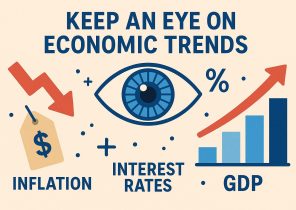Understanding Investment Leverage
Leverage in investing refers to the use of borrowed funds to amplify potential returns. While this strategy might sound promising due to the possibility of increased profits, it is essential to understand the potential risks associated with it. When investments funded with debt perform as expected, the returns can significantly exceed the borrowed amount. However, if the investment value declines, leverage can exacerbate losses, sometimes wiping out your entire investment.
The Mechanics of Leverage
Leverage is typically achieved by using various financial instruments or borrowed capital, allowing investors to control a larger asset base than they could with their own money alone. This concept is prominent in markets such as real estate, stocks, and derivatives. For instance, in the real estate market, buyers often use mortgages to purchase properties, giving them control over the property while only paying a fraction of its total cost upfront. In the stock market, leveraging can be accomplished through margin accounts provided by financial institutions, which enable investors to borrow a percentage of the equity value to purchase additional securities.
When employed wisely, leverage can enable investors to amplify their gains considerably. For example, if an investor has $10,000 and borrows another $10,000 to invest in a stock that appreciates by 10%, the investor would gain $2,000 instead of the $1,000 they would have earned without borrowing. However, it is crucial to acknowledge that the same principle applies to losses. Thus, leverage is a double-edged sword that requires careful handling and a robust risk management strategy.
The Risks of Leveraged Investing
The most pressing risk of leverage is that it introduces the possibility of losses that can exceed an investor’s original investment. Unlike investing with personal funds, where the maximum loss is the original amount invested, leveraging can lead investors into a situation where they owe more than they initially invested due to the borrowed capital. Understanding these risks is critical for anyone considering the use of leverage as part of their investment strategy.
Market Volatility: One significant risk is the increased exposure to market fluctuations. In a volatile market, a minor decrease in asset value can lead to significant financial repercussions for leveraged investors. Even a small downturn can lead to losses exceeding the initial investment, turning a strategic opportunity into a financial catastrophe. Consequently, it is crucial for investors using leverage to have a comprehensive understanding of market trends and the ability to anticipate potential downturns.
Interest Costs: Most borrowed funds come with interest obligations, which can reduce the net profit from investments or increase losses. It is crucial to account for these costs when evaluating the possible returns from leveraging. Even if the investment proves profitable, the interest paid on borrowed capital can significantly diminish the overall profitability.
Margin Calls: In stock market investing with leverage, a decline in the market value of assets can result in a margin call. This requires the investor to either deposit more funds or sell assets to maintain the margin required by the lender. Failing to meet this requirement may result in the lender liquidating the investor’s assets to cover the margin, which can cause substantial financial loss, compounding the risk inherent to leveraged strategies.
Real-World Examples of Leverage Pitfalls
Historically, leverage has played a significant role in financial crises, particularly the 2008 financial crisis. During this period, many investors and institutions took on considerable debt to amplify returns, falling into severe financial distress when markets collapsed. The subprime mortgage crisis, which contributed to the broader financial downturn, serves as a stark illustration of the dangers of excessive leverage. Financial institutions accumulated substantial amounts of debt through complex financial instruments that relied heavily on leverage, resulting in cascading losses as market conditions deteriorated.
These events underscore the speed and extent of losses that can occur when investments funded through leverage underperform. The crisis resulted in widespread financial ruin for individual investors and institutions alike, highlighting the importance of understanding and managing the risks associated with leveraged investments.
Conclusion
For most individual investors, taking on debt to invest may seem appealing due to the potential for amplified returns. However, it is inherently risky, especially during volatile market conditions. While leverage can offer substantial rewards, the potential for significant losses is often greater. Investors should weigh this risk against their financial capacity and risk tolerance before incorporating leverage into their investment strategies.
Instead of relying on leverage, investors should consider building their portfolios through safer, more sustainable means, such as consistent savings, diversified investments, and a focus on risk management. Educating oneself about the financial markets and maintaining a long-term investment perspective can mitigate the need for borrowing and its associated risks.
For further reading on how to manage investment risks effectively, you may explore resources provided by the U.S. Securities and Exchange Commission or consult with a certified financial advisor. This approach can provide a more secure path to achieving financial goals without the added pressure of maintaining leveraged positions.
This article was last updated on: August 4, 2025








